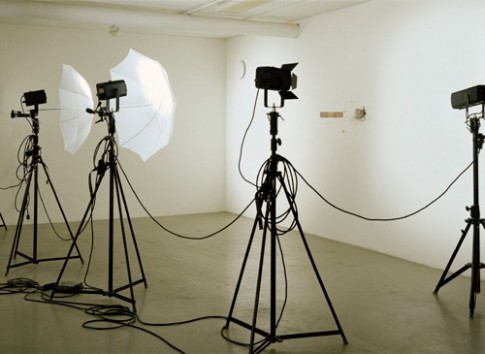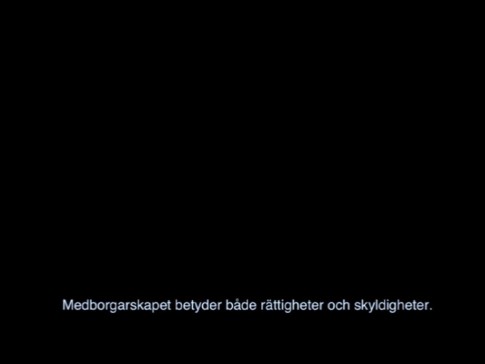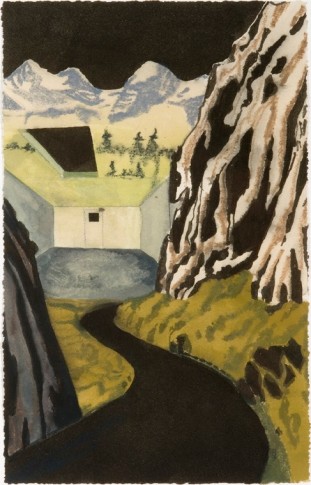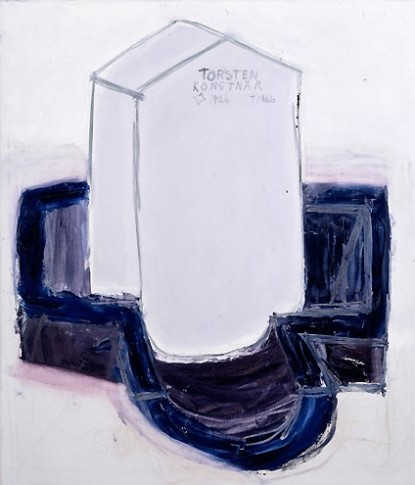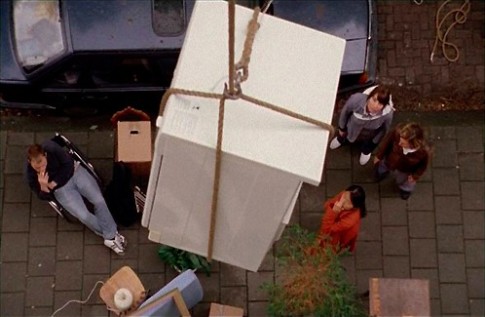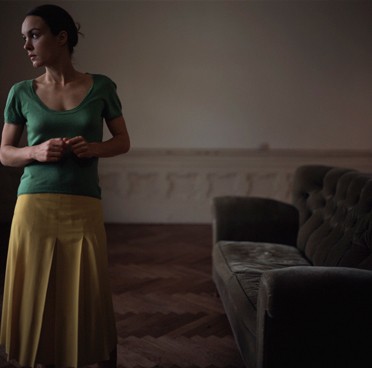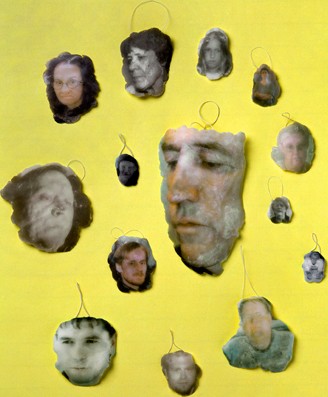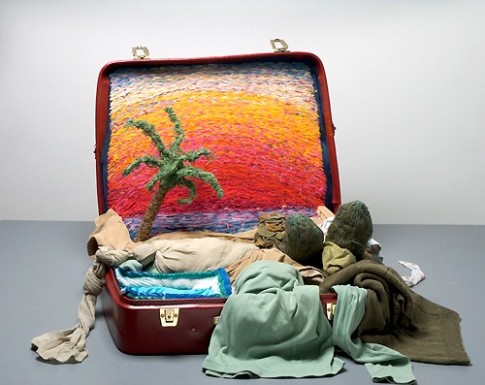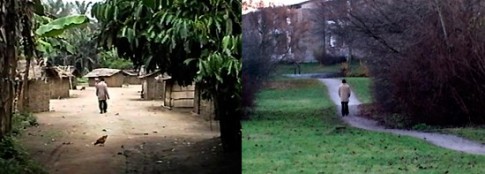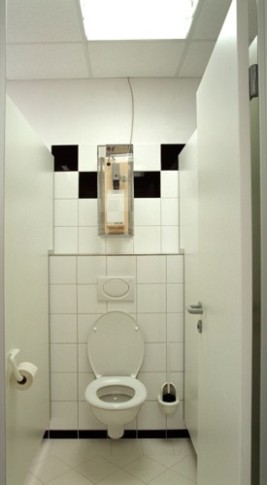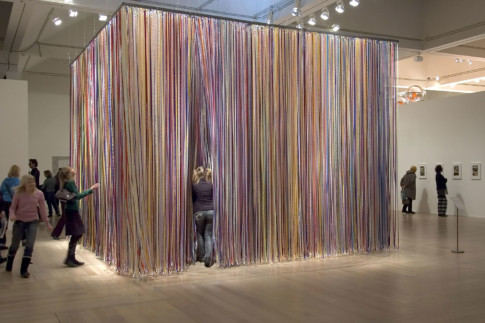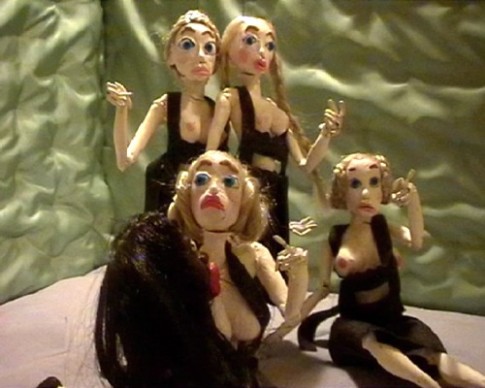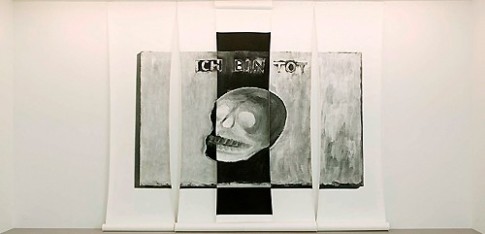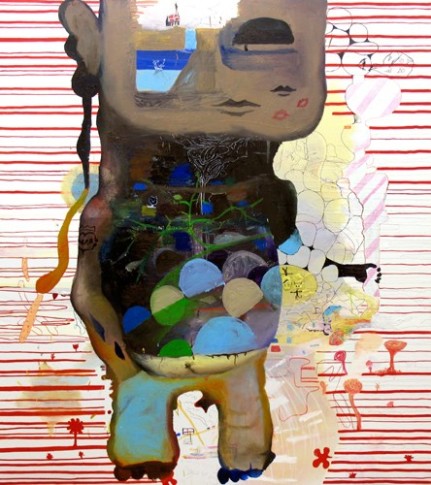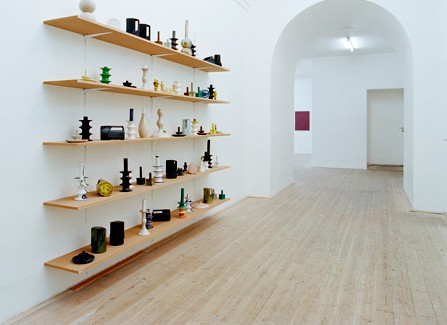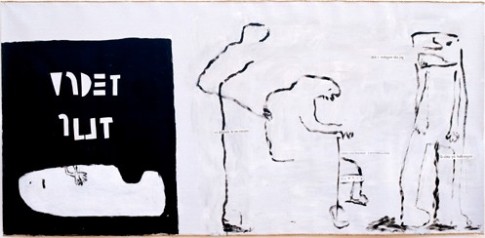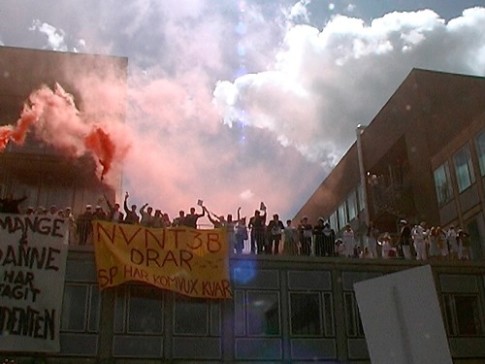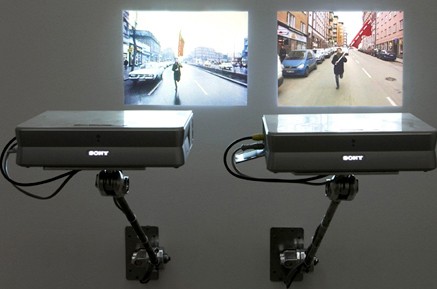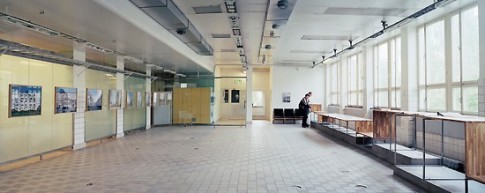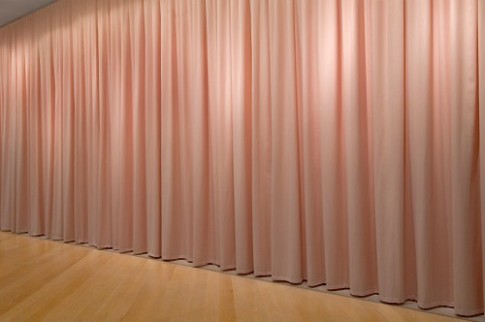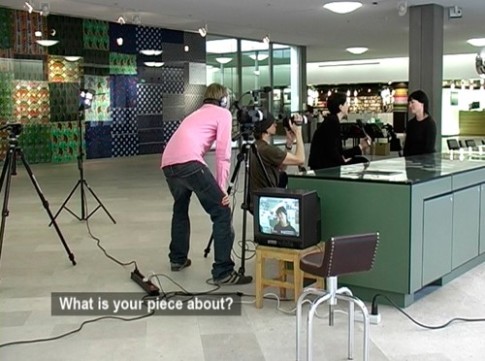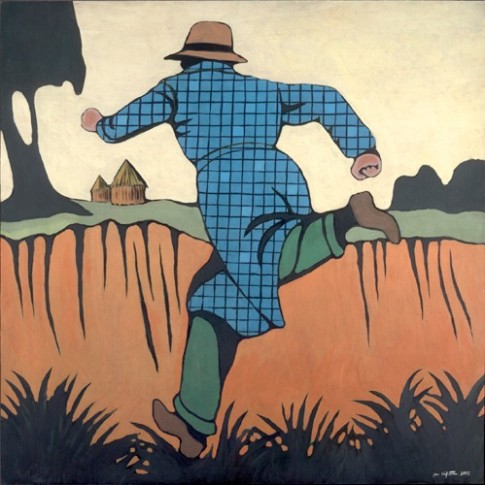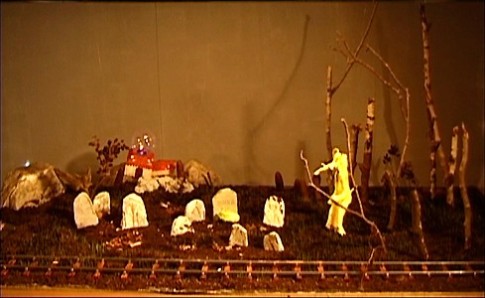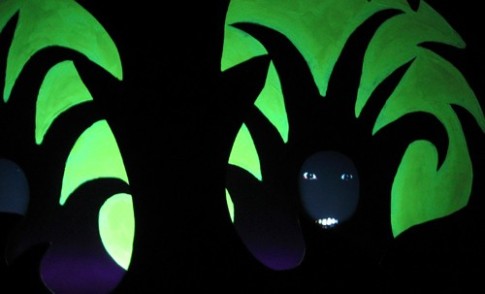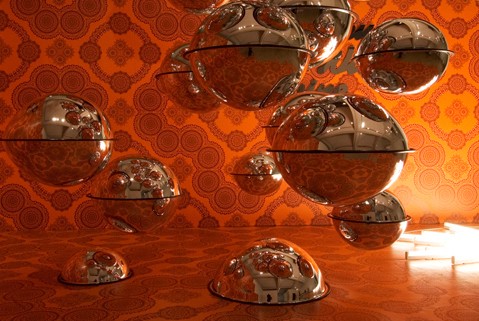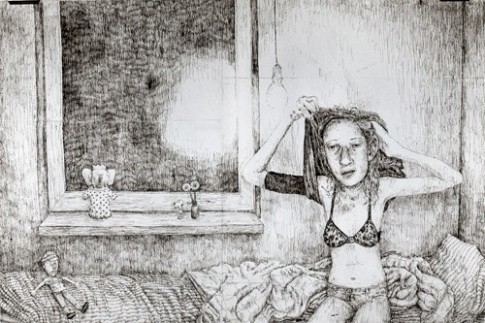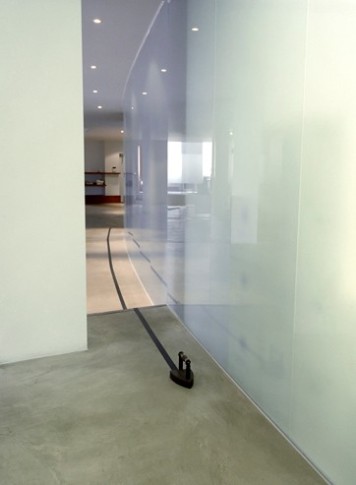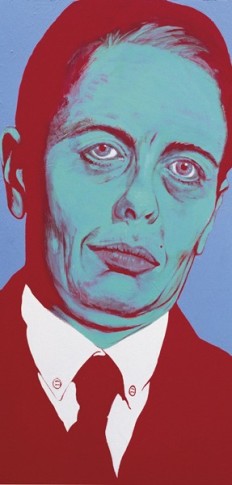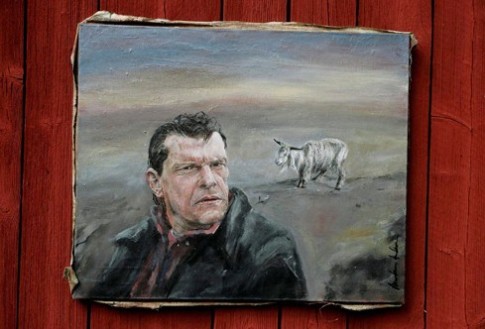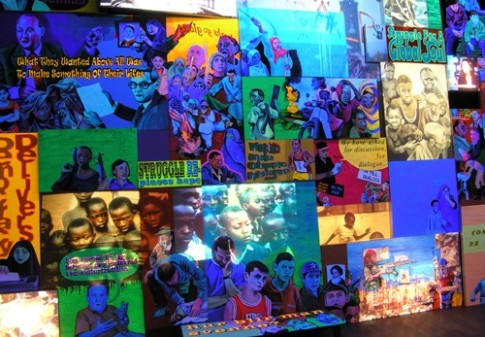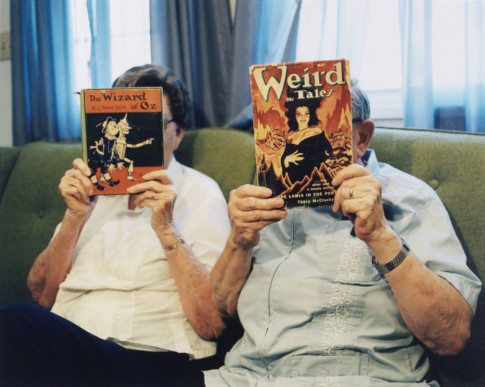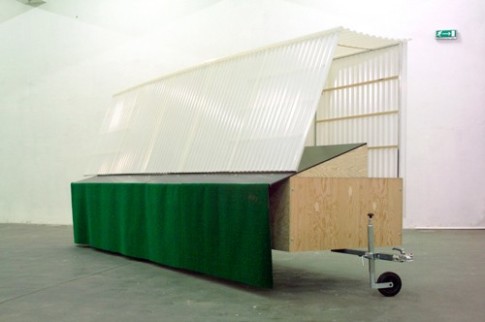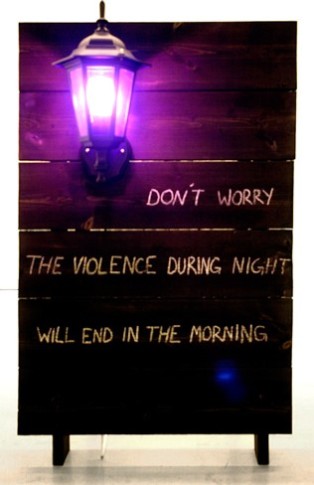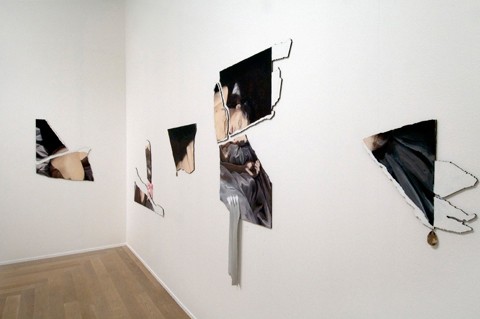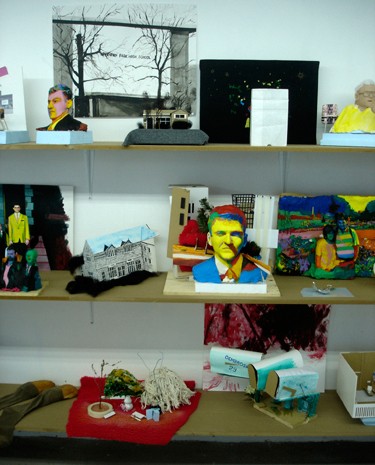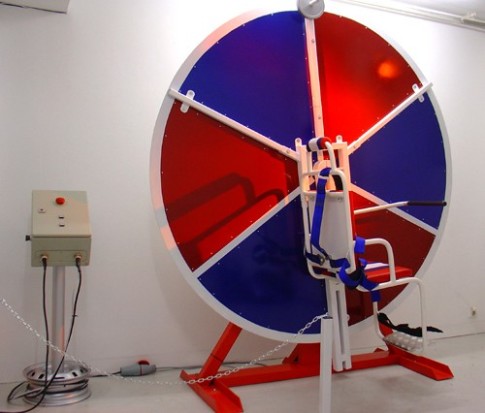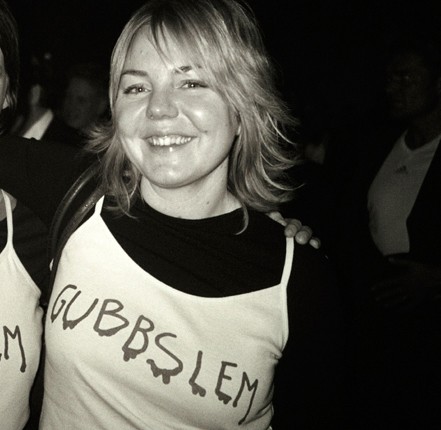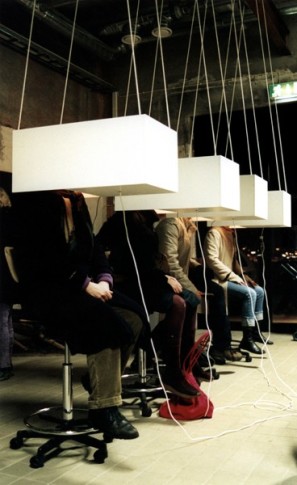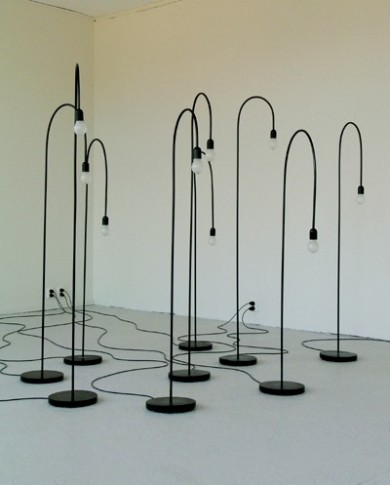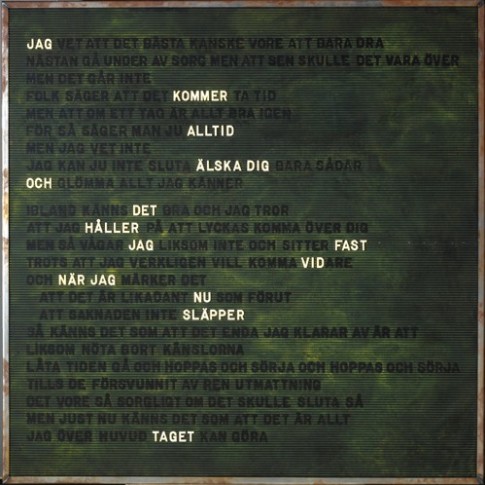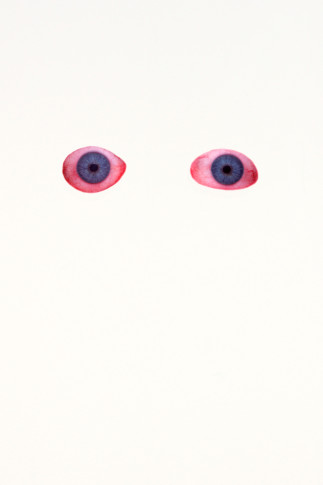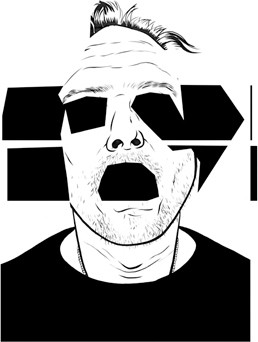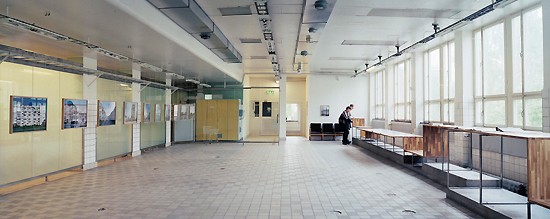
Per Hasselberg, From Hökarängen to Hötorgcity – Architect David Helldén, 2005 © Per Hasselberg. Photo: John Håkansson
Per Hasselberg
The first suburb in what was known as the tube-city – Hökarängen – was a model for the way in which the metropolitan structure could provide a democratic society on a small scale. This structure would combine the rationality of functionalism with a social content and was known to as “neighbourhood planning”. In neighbouring units, contact between individuals was encouraged by the creation of natural meeting-places such as parks, communal laundries and development of community centres.
The starting point for Per Hasselberg’s artistry are the conceptual ideas underpinning architecture and social planning. In the architecture of Hökarängen itself are embodied ideas about the suburb as a democratic nursery for good citizens. For this reason during the autumn of 2003 he initiated the Konsthall C project, which takes up half a still functioning communal laundry. The konsthall or art gallery is separated from the laundry by a frosted glass wall and is the site for exhibitions, seminars and workshops. It also houses two permanent exhibitions as well as Centrifug, an exhibition space which members of the public can apply to use.
The role of the communal laundry as a meeting-place forms the physical starting-point for Hasselberg’s study of the vision of the good society. The investigation also encompasses ideas concerning “neighbourhood work”, which the social services started during the 1970s and the concept of relational aesthetics, in which the role of the artist is sometimes likened to that of the social worker.
Per Hasselberg
Born 1971 in Skillingaryd.
Lives and works in Stockholm.
Education
1998–2003
Malmö Art Academy, Malmö
Selected solo exhibitions
2005
OPTION, Index, Stockholm
2003
Nya Vägar, Skånes Konstförening, Malmö
2002
das Schwedenhaus, Galleri Signal, Malmö
Selected group exhibitions
2005
DMZ 2005, Seoul, Korea [KP]
2005
Whatever happened to Social democracy?, Rooseum, Malmö
2002
Changing Places, Index, Stockholm
Selected bibliography
Ronald Jones, “Whatever Happened…”, Artforum International, Summer 2005.
Cecilia Blomberg, ”I samhällets tjänst”, Bildrutan, P1, 2005-02-23.
Måns Holst-Ekström, ”När ingenjörerna visar vägen”, Sydsvenskan 2003-12-10.

